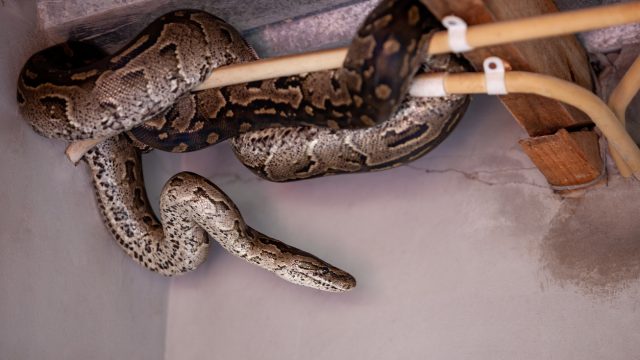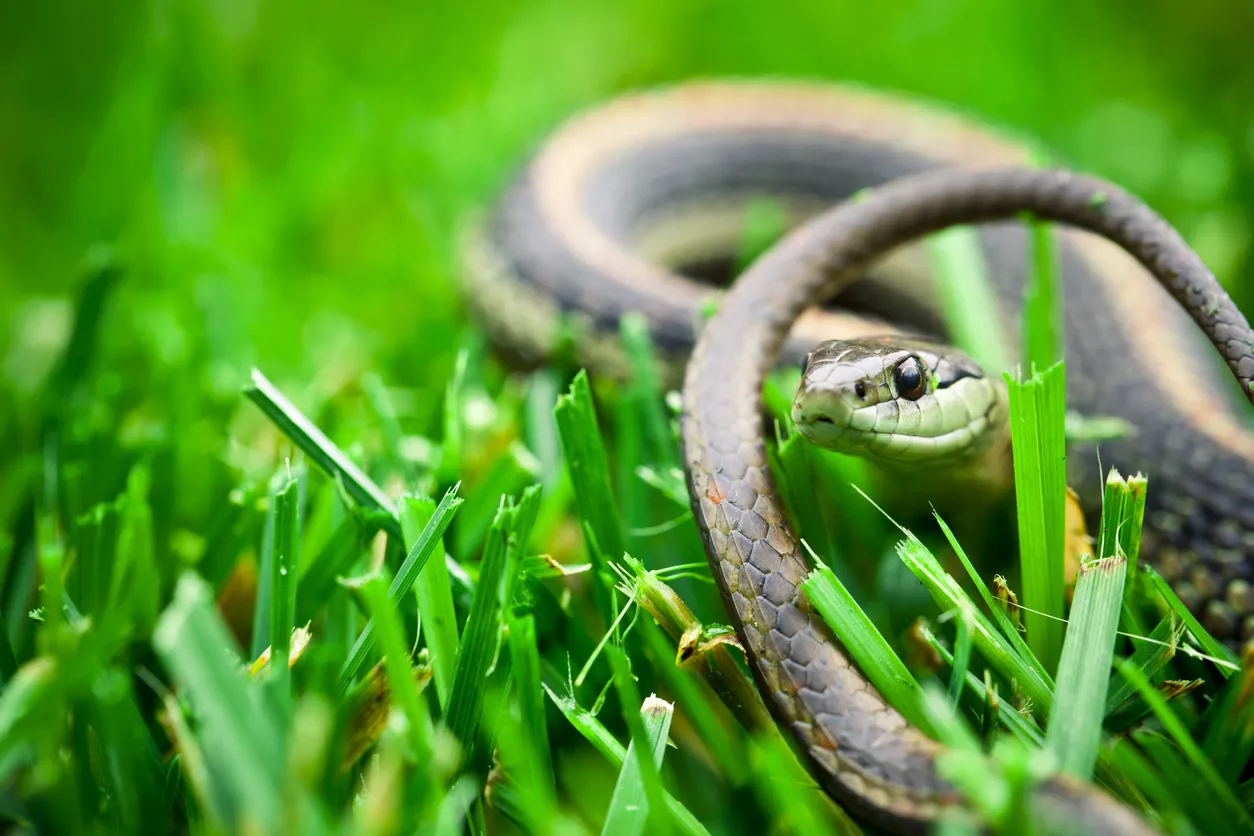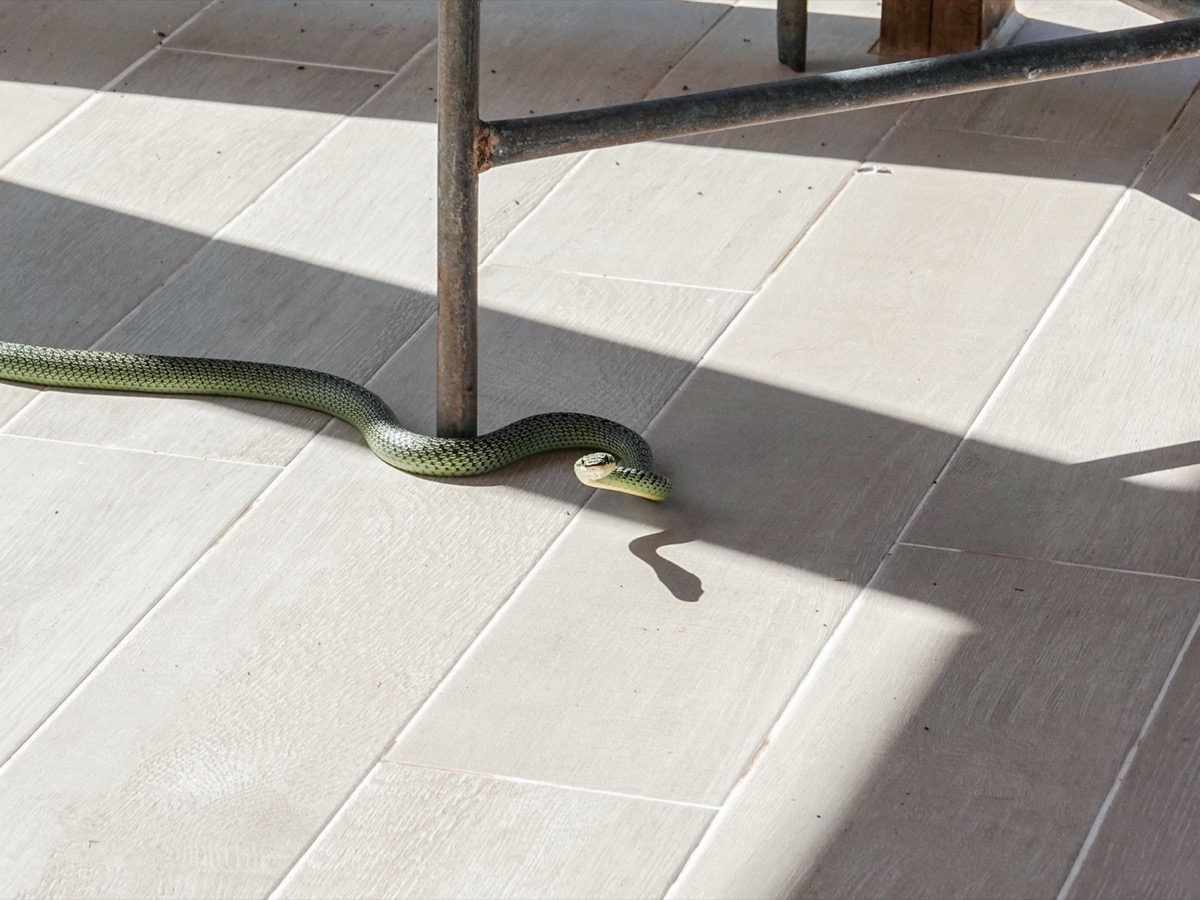The No. 1 Place Snakes Love to Hide in Your Home

Most homeowners would probably like to think they know their property from top to bottom. After all, anyone who keeps up with cleaning, tidying, and organizing is bound to be familiar with every nook and cranny of their humble abode. But every so often, things can make their way inside that weren’t meant to be there in the first place, such as pests and wild animals. And if you’re trying to avoid being surprised by a snake in your home, experts warn there’s one area they love to hide the most. Read on to see where serpents tend to stash themselves away.
READ THIS NEXT: If You Live Here, Watch Out for This Venomous Snake in Your Backyard.
Certain things in your yard could be attracting snakes into your home.

Despite how frightening they can be to some, most consider snakes to be a boon to the health of your yard and garden as natural predators to pests such as mice, rats, toads, slugs, and more. But while they may be vital to maintaining your yard’s healthy ecosystem, accidentally inviting one indoors can be less than ideal. And according to experts, staying up on certain chores can make sure they stay in your garden where they belong.
“One of the best ways to keep snakes out of your home is to make your home and the perimeter around your home as unattractive to them as possible,” Donnie Shelton, owner of EnviroCon Termite & Pest, tells Best Life. “Snakes are looking for places to live unnoticed, so you should ensure a gap of two to three feet between your home’s perimeter and bushes and shrubs. You should also ensure there aren’t piles of leaves or sticks on the perimeter of your home.”
Others point out that there are certain lawn design elements you may want to avoid. “We often encounter snakes in yards under bushes, garden features such as fountains and large pots, or sunny areas with places to hide such as decorative rocks and overgrown plants,” Todd Simpson from HTP Pest Control tells Best Life. “We like to advise customers to avoid having these features right against their home.”
Once inside, experts say snakes will likely head for one particular hiding place.

If a snake winds up making its way into your home from your yard, their shy nature makes it likely they’ll stash themselves away rather than make a big entrance. But where are snakes most likely to hide, given all their options? According to experts, they tend to seek out one type of environment when trying to lay low in your house.
“Snakes prefer spots where it is dark and there are many areas to hide,” Daren Horton of Gecko Pest Control tells Best Life. “This can often be near a heat source, so areas such as near water heaters, laundry room pipes, and areas of the home with discarded furniture and clutter such as garages are all common places we see them.”
RELATED: For more up-to-date information, sign up for our daily newsletter.
Snakes use other methods of staying warm that can make them likely to camp out in certain places.

In many cases, snakes make their way inside homes when they’re trying to get comfortable as weather changes between seasons. And as cold-blooded animals, this makes any means of controlling their body temperature a potential hideaway for them—and not just manufactured ones.
“When snakes venture indoors, they usually prefer to be in damp and humid environments, with access to warmth from the sun,” Shelton tells Best Life. “Generally, they’re found in basements and crawl spaces, but specifically areas where there is active sun during the day for them to warm up and shelter from predators such as piles of tarps or blankets, cardboard boxes, or storage containers, as well as in the rafters of your basement or around water pipes.”
You can avoid inviting snakes indoors by depriving them of one important thing they’re after.

While snakes are often looking to get cozy when they sneak into your house, warmth isn’t the only thing they’re after. By taking care of other issues that could be plaguing your home, experts say you can help avoid creating an overall inviting environment for the reptiles.
“If a customer has pests such as bugs and rodents, this is a constant food source for snakes and draws them into the home,” Dan Sherrin of Professional Exterminating tells Best Life. “Routine cleaning, decluttering, and pest control removes their food source and hiding spots, making it much less likely to find snakes in your home.”
READ THIS NEXT: How a Snake Can Get Into Your Home Through Your Toilet.